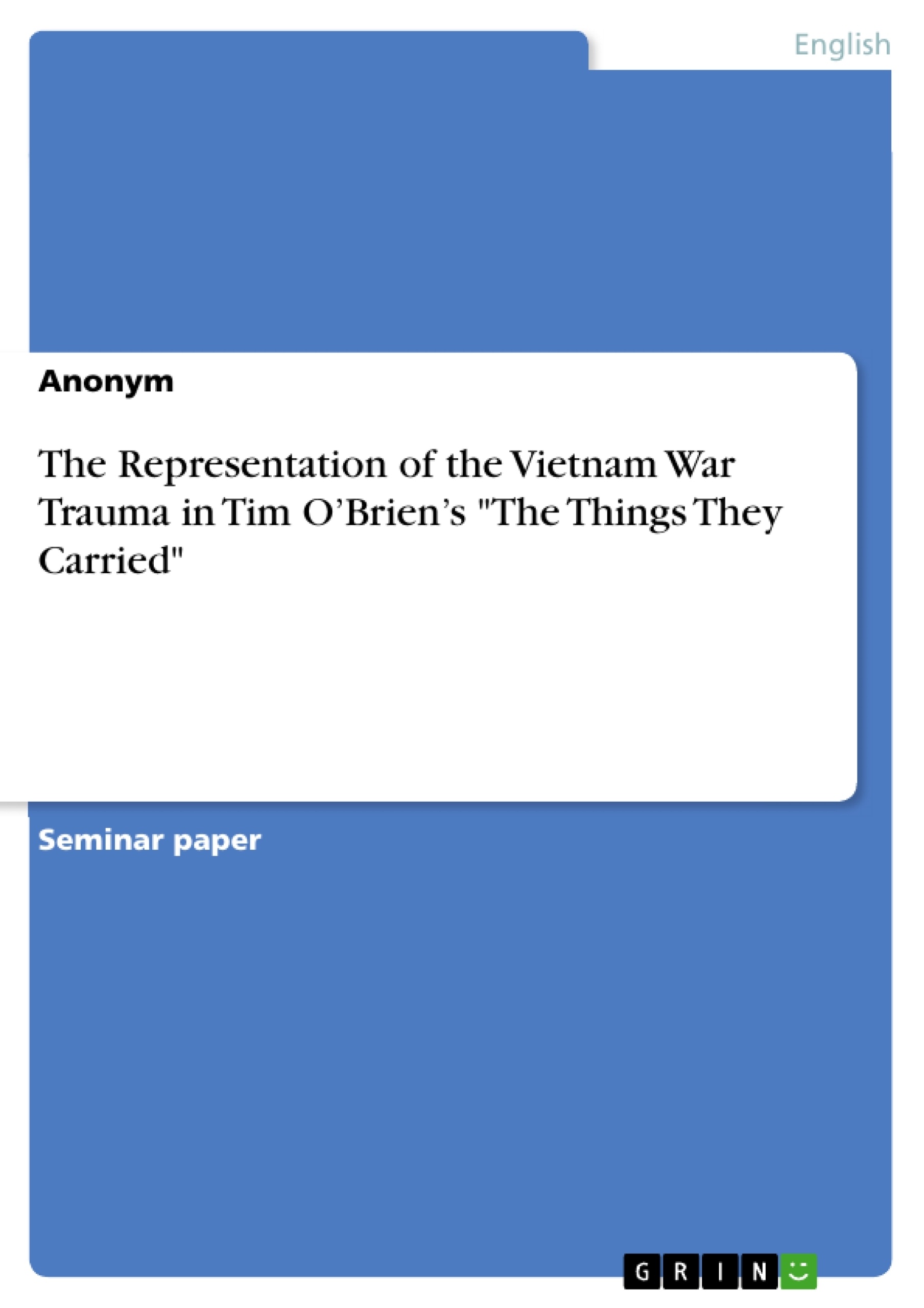First published in 1990, Tim O’Brien’s story collection "The Things They Carried" is arguably the work most closely associated with the author’s name and a highly praised fictional approach to the Vietnam War and its influence on those who participated in it. The total of 22 short stories focuses on a squad of young American soldiers referred to as the Alpha Company and touches upon a wide selection of themes and motifs, which include friendship, love, memory, storytelling, superstition and the ever-present elements of fear, violence, death, and the loss of innocence that are tied to the exposure to combat action. In addition to that the portrayal of trauma in the novel has received positive attention from experts (Heberle 178) and critics and helped to draw attention to the role of the veteran in the United States society.
In an attempt to explore this particular topic, the following pages will first address the question why Vietnam War literature as a genre did not begin to fully develop until roughly ten years after the fall of Saigon in 1975 and approach the way Tim O’Brien deals with the problematic of speaking and writing about a war that was unique in American history and called for an equally distinctive representation in literature. Afterwards the main focus of this work is devoted to the experience of trauma both during the time and on the site of the Vietnam conflict and in the United States after the war had come to an end, based on its depiction in Tim O’Brien’s The Things They Carried and by means of referring back to a selected variety of his stories. The concluding remarks will then be devoted to the aftermath of the Vietnam War in the public eye and the development of war literature in the United States after the 1980s.
Inhaltsverzeichnis (Table of Contents)
- Introduction
- 1. The development of Vietnam War Literature
- 2. Tim O'Brien and writing about the Vietnam trauma
- 3. The experience of trauma during the Vietnam War
- 3.1 Death and the act of committing violence
- 3.2 Experiencing violence
- 4. The handling of trauma after the war
- 4.1 Storytelling
- 4.2 War veterans and suicide
- 5. Aftermath of the Vietnam War trauma
Zielsetzung und Themenschwerpunkte (Objectives and Key Themes)
This work explores the representation of Vietnam War trauma in Tim O'Brien's "The Things They Carried." It examines the reasons for the delayed emergence of Vietnam War literature, the unique challenges of depicting such a traumatic event, and how the novel portrays the experience of trauma both during and after the war.
- The development of Vietnam War literature
- The impact of trauma on soldiers
- The role of storytelling in coping with trauma
- The lasting effects of the Vietnam War on American society
- The representation of violence and death in literature
Zusammenfassung der Kapitel (Chapter Summaries)
The introduction provides an overview of Tim O'Brien's "The Things They Carried" and its significance in understanding the Vietnam War's impact on American society. The first chapter examines the delay in the development of Vietnam War literature, attributing it to a combination of factors such as the war's unpopularity, the lack of clear victory, and the intense media coverage that saturated the public with the realities of war. The second chapter focuses on Tim O'Brien's approach to writing about the Vietnam War, highlighting the challenges of representing a complex and traumatic experience.
The third chapter delves into the portrayal of trauma within the war itself, examining themes such as death, violence, and the loss of innocence. The fourth chapter explores the handling of trauma after the war, focusing on storytelling as a coping mechanism and the prevalent issue of suicide among veterans. The fifth chapter examines the lasting effects of the Vietnam War on American society, specifically the collective sense of trauma and its influence on literature and culture.
Schlüsselwörter (Keywords)
The main keywords and focus topics include Vietnam War literature, trauma, storytelling, violence, death, loss of innocence, war veterans, suicide, and American society. This work explores the representation of the Vietnam War and its impact on those who participated in it, with a particular emphasis on the psychological and emotional effects of trauma.
- Citation du texte
- Anonym (Auteur), 2013, The Representation of the Vietnam War Trauma in Tim O’Brien’s "The Things They Carried", Munich, GRIN Verlag, https://www.grin.com/document/295035



